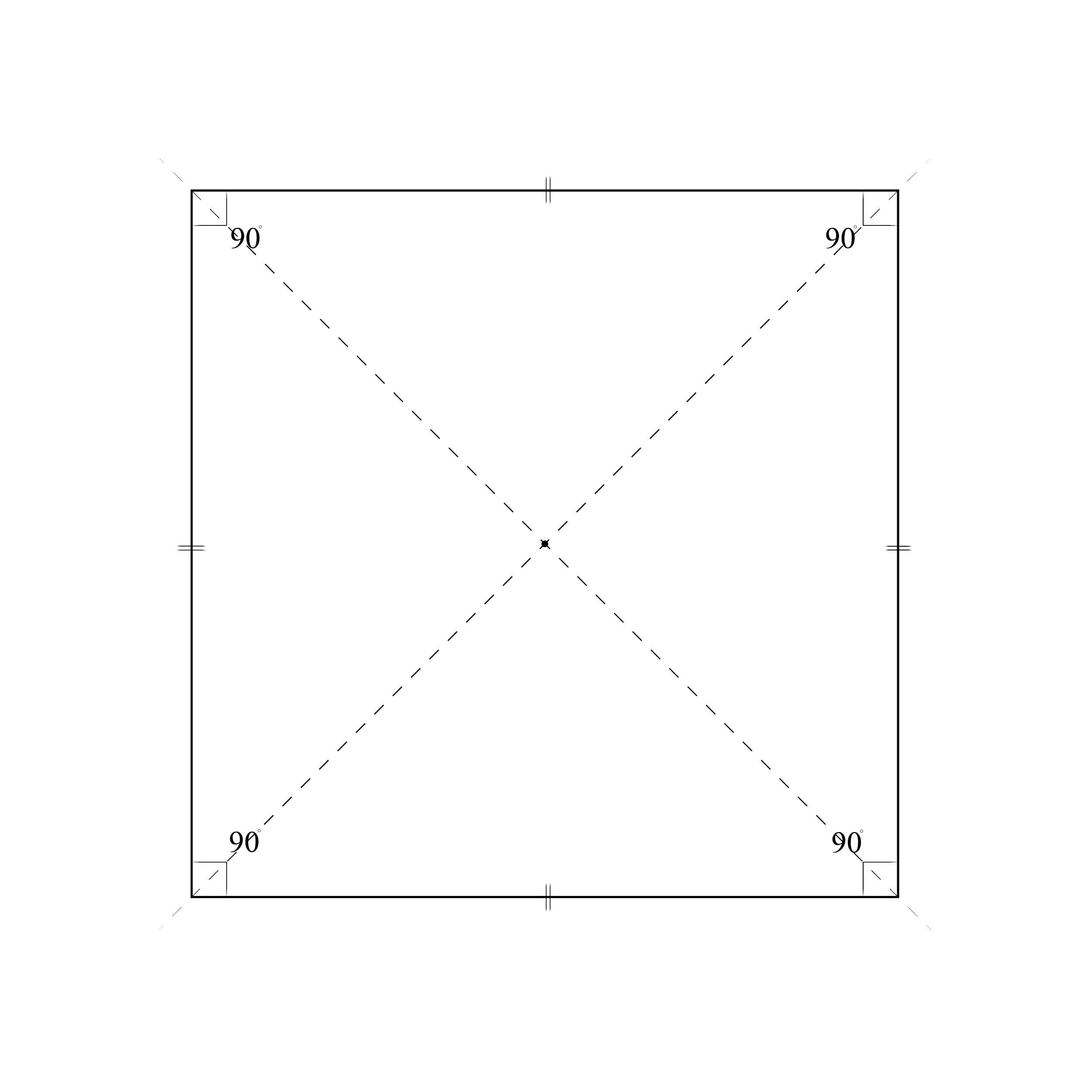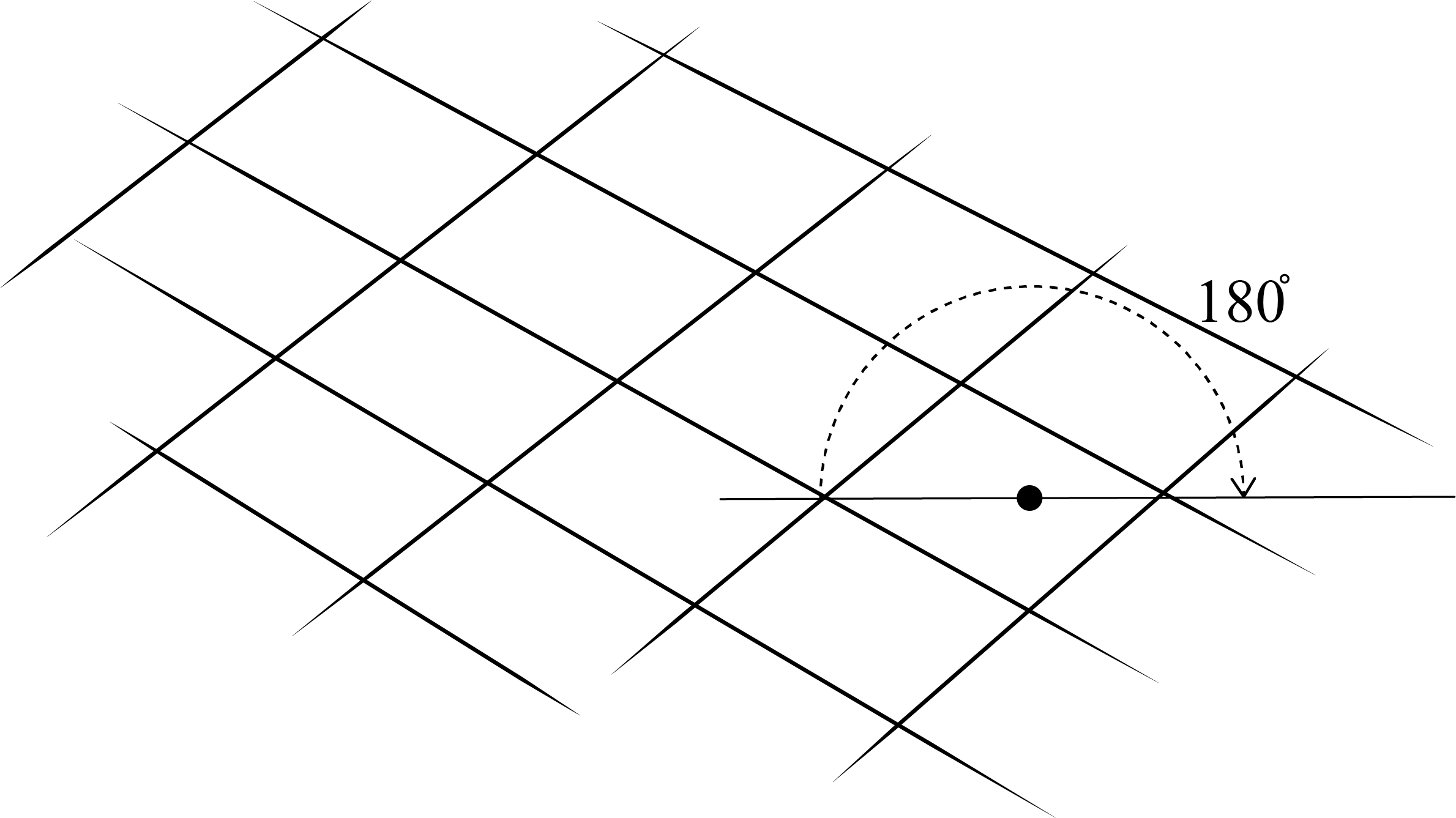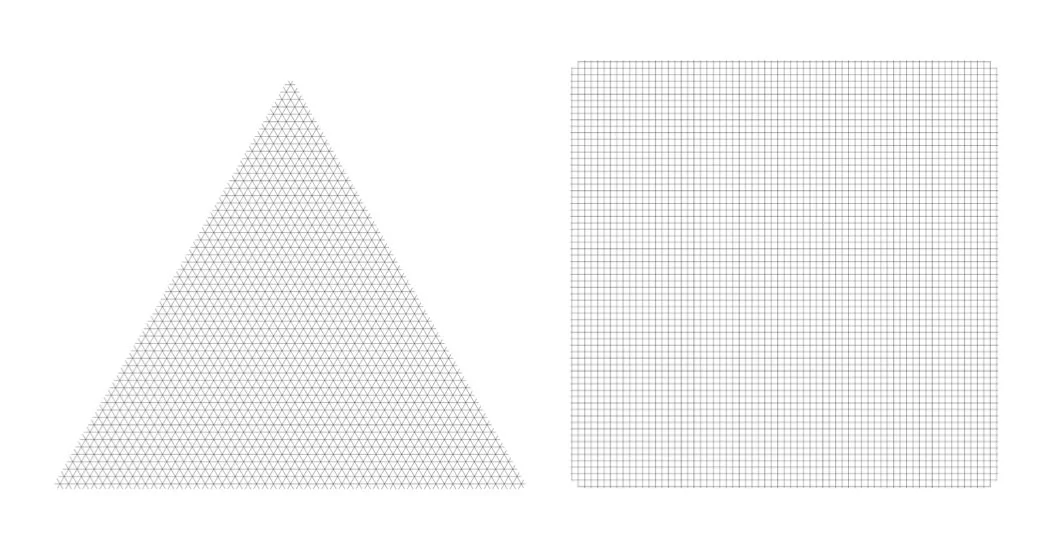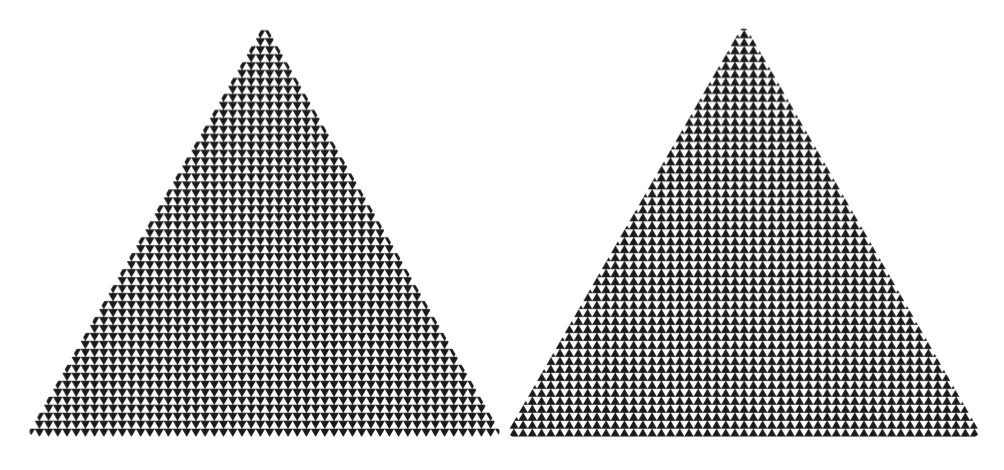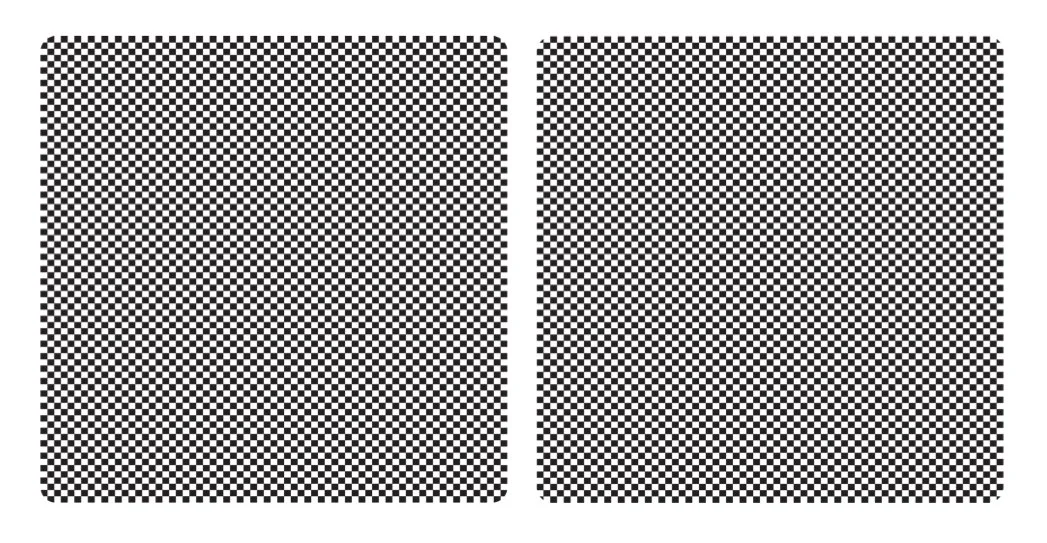3-Dimensional Moire Patterns
Regular Nested Rotational Symmetries
2- and 3-dimensional self-similarity and synchronicity in Platonic dipolygonoid geometry
Prithvi Rana Dev
2023
Abstract — An exploration of moving-image interference using Fuller-Stuart-Clinton dipolygonoids reveals a series of 3-dimensional moire patterns that exhibit regularity. These modular kinetics extend synchronicity from 2- dimensional periodicity to 3-dimensions. Elements of a platonic structure are self-similar, constructed with only one type of regular polygon i.e, the equilateral triangle (for tetra-, octa-, and icosahedral transformers), squares (for the cube transformer), and pentagons (for the dodecahedron transformer). Each jitterbug face consists of 2 identical overlapping polygons i.e, a dipolygon. Dipolygons are superimposed with identical periodic or quasi-periodic grids (3-, 4-, or 5-gon lattices) which create self-similar interference patterns as each structure unfolds. Rotation-translation along every dipolygon axis results in a chiral ex- and impansion of each platonic dipolyhedron, with equivalent rotational periods in 2-dimensional moire and 3-dimensional motion. The result is a set of scale-independent and multi-dimensional structures that perform multiple symmetry operations at once. I present this set of regular symmetries with relevant observations, further extensions in reasoning, as well as my process of construction.
I. INTRODUCTION
The Rhode Island School of Design’s nature lab houses a curious collection of physical models and toys called the Loeb collection. This was my first exposure to the themes and ideas that shaped the work presented in this paper. Collated by the crystallographer and geometrician Arthur Loeb, its many fascinating objects help intuit structure from the micro and molecular to the macro and cosmic scales of the universe. 2-d tessellation prints and 3-d models such as Buckminster Fuller’s jitterbug and other tensegrity models underline the core principles of pattern, symmetry, and structure that nature employs to build our reality.
Fuller’s iconic jitterbug inspired the design-scientists R. Duncan Stuart, Joseph D. Clinton, and H.F. Verheyen to make and describe a class of expanding-contracting structures called dipolygonoids. These handheld architectural models delight through radial and cyclic movement. Rivets at the center of each face create rotational pivots, while vertex-to-vertex connections between inside and outside layers of adjacent faces provide tensile strength with continuous elasticity. Together they over-constrain each structure’s spatial mechanics. Binary interconnectivity permits rotation-translation, revealing a sequence of nested alterations to regular Platonic and semi-regular Archimedean solids. This kinematic provides a visual approach to understand and construct uniform polyhedra using geometric duality in their 3-dimensional shape.
Interference is a function of motion in semi-tensile dipolygonoids. Overlapping polygons require time to rotate in opposite directions, allowing dipolygons the potential to animate. Novel experiments with this concept involve a material adjustment - constructing modules using graphic sticker-transparencies and acrylic sheets. This allows analog illusion and moving-image techniques that employ dot and line patterns, cut- outs, colour, opacity, and many other visual tools. When regularity is considered, 3- and 4-fold lattices are applied to 3- and 4-polygons and their corresponding regular dipolygonoids, whereas 5- fold quasi-periodic patterns build on the 5-fold symmetry of the dodecahedral dipolygonoid. Resultant self-similarity in structure, grid, and interference lends periodic harmony to elements in transformation.
First we understand regular structures in 2-dimensions and the tessellations that arise from these. Then we see self-similar interference patterns arising from 2-dimensional regular and quasi-periodic tessellations. We then explore 3-dimensional regularity in the platonic solids, the jitterbug, dipolygonoids, and describe self-similar 3-dimensional patterns which constitute multiple symmetry operations simultaneously. Physical constructions of such structures shall be discussed. Finally, we visit mathematical chiral transformations in 3-dimensions and extend this reasoning into higher dimensions as well.
II. REGULAR SHAPES AND TESSELLATIONS IN 2-DIMENSIONS
i. Regular polygons
A regular polygon is a 2-dimensional n-sided shape in which the sides are all the same length and are symmetrically placed about a common center, i.e., the polygon is both equiangular and equilateral. The terms equilateral triangle and square refer to the regular 3- and 4-polygons. Pentagons are regular 5- polygons, third in an infinite series of perfect polygonal shapes in 2-dimensions that approximate to a circle at infinity (Fig.1).
The equilateral triangle or 3-polygon (Fig.2), consists of 3 equal length sides at 60-degree adjacent angles from one-another. These lines meet at 3 vertices, A, B, and C, which are equidistant from center O (Fig.3). The triangle repeats itself i.e, translates, with every 120-degree rotation through axis O, creating 3 instances of symmetry through 360-degrees.
The square or 4-polygon (Fig.4) has 4 equal length sides at a 90-degree right angle from one-another, and the pentagon or 5-polygon (Fig.6) has 108- degree angles between 5 equal length sides. Squares have 4 vertices, A, B, C, and D (Fig.5), and pentagons have 5 vertices, A, B, C, D, and E (Fig.7) - that are each equidistant from center O. Squares repeat with every 90-degree rotation pivoted at O, having 4 instances of symmetry in 360-degrees. A pentagon requires 72-degree rotations for 5 symmetric repetitions through 360- degrees.
Hence the equilateral triangle exhibits 3-fold symmetry, while squares and pentagons exhibit 4- and 5-fold symmetry, respectively.
Fig.1
Infinite series of regular 2D polygons
Fig.2
Equilateral Triangle (3-Polygon)
Fig.3
Symmetries of the Equilateral Triangle
Fig.4
Square (4-Polygon)
Fig.5
Symmetries of the Square
Fig.6
Pentagon (5-Polygon)
Fig.7
Symmetries of the Pentagon
ii. Regular tessellations
A tessellation is a pattern of shapes repeated to fill a plane or space. These can be a tiling of polygons (2-dimensional), polyhedra (3-dimensional), or polytopes (n-dimensional).
In 2-dimensions, the breaking up of self- intersecting polygons into simple polygons is also called a tessellation, or more properly, a polygon tessellation. The shapes do not overlap and there are no gaps. For a tessellation made of polygons, the sum of angles formed at any vertex is 360 degrees. For example, a congruent polygon tessellation is made of parallelograms (2-fold, Fig.8), which has a rotation-translation of 180 degrees.
A regular tessellation is made up of only one type of regular polygon. They are highly symmetric edge to edge tilings that can theoretically fill a plane to infinity. There are only 3 tessellations that are composed entirely of regular polygons, those made of equilateral triangles (3-fold, Fig.9), squares (4-fold, Fig.10), and hexagons (6-fold, Fig.11). Each of them have rotational-translational symmetry. The 3-fold tessellation translates at 120 degrees, 4-fold at 90 degrees, and 6-fold at 60 degrees of rotation.
In 3-dimensions, a polyhedron which is capable of tessellating space is called a space-filling polyhedron. Examples include the cube, rhombic dodecahedron, and truncated octahedron. A tessellation of n-dimensional polytopes is called a honeycomb lattice.
Fig.8
2-fold tessellation
Fig.9
3-fold tessellation
Fig.10
4-fold tessellation
Fig.11
6-fold tessellation
When a polygon structure and superimposed tessellation are constructed with the same n-fold symmetry, they create self-similar modules. Seen below (Fig.12) are wireframe self-similar 3- and 4-fold modules.
Fig.12
Self-similarity : wireframe 3- and 4-tessellations superimposed on 3- and 4-polygons
When dipolygons (2 overlapping layers of identical regular polygons) are considered in the construction of platonic dipolygonoids, checkered (black and transparent) tessellations create a relevant superimposition for self-similarity (Fig.13, Fig.14). As these alternately checkered grids perfectly overlap, the structure becomes opaque, because the transparent polygons of the top layer grid overlap with the black polygons on the bottom layer grid.
Fig.13
Checkered 3-fold self-similar module and its alternate
Fig.14
Checkered 4-fold self-similar module and its alternate
Parallelograms and hexagons do not make any regular 3-dimensional solid. So we shall consider only equilateral triangle and square tessellations for the construction of Platonic dipolygonoids. This is because in terms of regularity, only 3-fold and 4- fold tessellations create appropriate superimpositions for a self-similar module.
iii. Quasi-periodic tessellations
The discovery of quasicrystals (Fig.15) by Dan Shechtman in 1982 led to a redefinition of symmetries to include quasi-periodic 5-fold symmetry (as well as 8, 10 and 12-fold), to the existing 2-, 3-, 4- and 6-fold symmetry system of crystallography as exhibited in natural crystals. Previously in the 1960's, Roger Penrose created aperiodic tilings now known as Penrose tilings (Fig.16), which had quasicrystalline symmetry. Shechtman's discovery was the first instance of them being found in nature.
They are termed ‘quasi’ because their molecular arrangements are ordered but not periodic, in the sense you can continuously fill all available space using the pattern, but the atomic lattice lacks translational symmetry. This means a shifted copy will never match the original, or that they exhibit incommensurability along any given direction. They cannot be periodically tiled, for instance, the way a square grid or cubic lattice can. In theory they can be viewed as irrational 3-dimensional slices of hyper-cubic 5-dimensional or higher dimensional periodic lattices (sliced at ~1.618 degrees), that are then projected with an icosahedral perspective onto 2 dimensions to create quasi-periodic dot arrangements (Fig.17, Fig.18).
These provide 5-fold pentagonal symmetry with which we can create a rotation-translation interference pattern while staying true to the 5-fold symmetry of the dodecahedron, thus allowing for self-similar dodecahedral dipolygonoids.
Fig.15
Shechtman’s x-ray diffraction of the Al86Mn14 alloy : 10-fold quasi-periodic pattern




